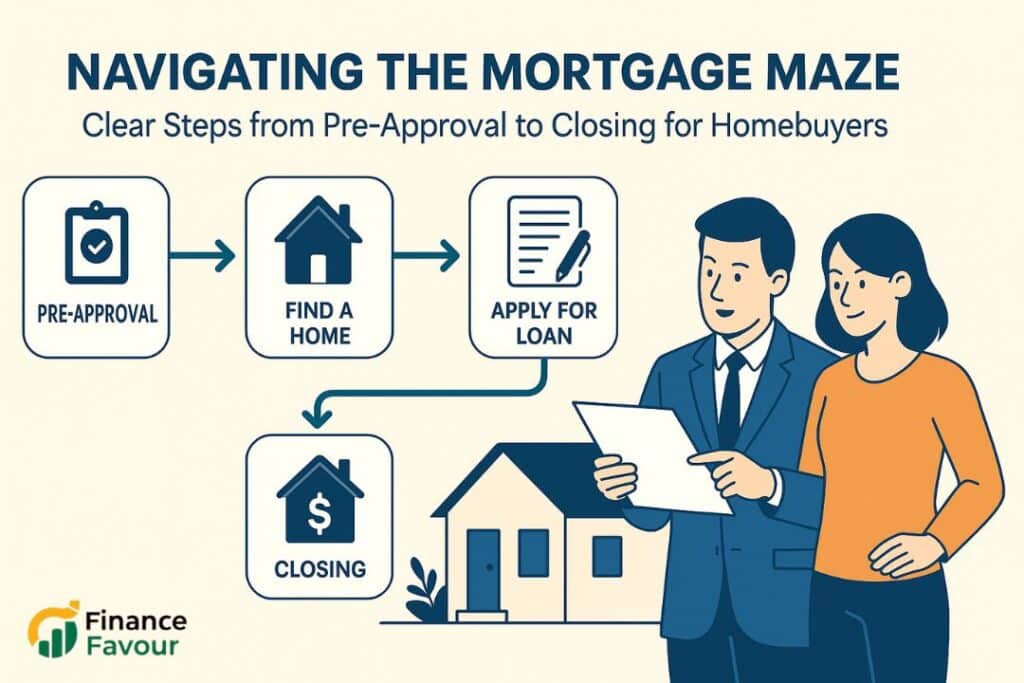Navigating the complexities of mortgage approval can be daunting, especially when faced with financial metrics like the front end ratio. This key figure, also known as the housing ratio, is pivotal in determining your eligibility for a mortgage as it assesses your ability to manage monthly housing expenses relative to your income. By understanding and mastering this ratio, prospective homebuyers and foreign investors can significantly enhance their chances of securing favorable financing. In this comprehensive guide, we will demystify the front end ratio, offering practical insights into its calculation, as well as strategies to optimize it for successful mortgage approval. Empower yourself with the knowledge to forge a path toward financial stability and the rewarding journey of homeownership.
Understanding the Front End Ratio
The front end ratio is a crucial concept in mortgage approval. Let’s explore its importance and role in the home buying process.
Importance in Mortgage Approval
The front end ratio, also known as the housing ratio, is a key metric lenders use to assess a borrower’s ability to manage housing expenses. It’s calculated by dividing your projected monthly housing costs by your gross monthly income.
This ratio provides lenders with a quick snapshot of your financial health, specifically in relation to housing costs. A lower front end ratio generally indicates a stronger financial position, making you more attractive to lenders.
Understanding and optimizing your front end ratio can significantly improve your chances of mortgage approval. It’s a powerful tool in your home buying arsenal, helping you present a compelling case to potential lenders.
Role in the Home Buying Process
The front end ratio plays a pivotal role throughout the home buying process, influencing everything from your initial budget to final loan approval.
At the outset, calculating your front end ratio helps you determine a realistic price range for your home search. This prevents wasted time looking at properties beyond your means.
During the mortgage application process, lenders will scrutinize your front end ratio. A favorable ratio can lead to better loan terms, potentially saving you thousands over the life of your mortgage.
Remember, the front end ratio is just one piece of the puzzle. Lenders also consider other factors like credit score and debt-to-income ratio. However, mastering this metric gives you a significant advantage in your journey to homeownership.
Calculating the Front End Ratio
Understanding how to calculate your front end ratio is essential for any prospective homebuyer. Let’s break down the process and highlight common pitfalls to avoid.
Step-by-Step Calculation Guide
Calculating your front end ratio is a straightforward process. Follow these steps to determine your ratio:
- Calculate your gross monthly income. This includes all sources of income before taxes and deductions.
- Estimate your monthly housing expenses. This typically includes:
- Principal and interest payments on your mortgage
- Property taxes
- Homeowners insurance
- Homeowners association (HOA) fees, if applicable
- Divide your monthly housing expenses by your gross monthly income.
- Multiply the result by 100 to get your front end ratio percentage.
For example, if your monthly housing costs are $1,500 and your gross monthly income is $5,000, your front end ratio would be 30% ($1,500 / $5,000 = 0.3, or 30%).
Common Mistakes to Avoid
When calculating your front end ratio, be aware of these common pitfalls:
Underestimating housing costs: Many first-time buyers forget to include property taxes, insurance, or HOA fees in their calculations. This can lead to an artificially low ratio.
Overestimating income: Be realistic about your income. Including bonuses or overtime pay that isn’t guaranteed can skew your ratio.
Forgetting about fluctuations: Remember that property taxes and insurance premiums can change over time. It’s wise to factor in potential increases when calculating your ratio.
By avoiding these mistakes, you’ll get a more accurate picture of your financial situation, helping you make informed decisions in your home buying journey.
Optimal Ratio Benchmarks for Success
Understanding what constitutes a good front end ratio is crucial for mortgage approval success. Let’s explore industry standards and lender expectations.
Industry Standards and Expectations
In the mortgage industry, front end ratios are typically expected to fall within certain ranges:
- Conventional loans: Generally, lenders prefer a front end ratio of 28% or less.
- FHA loans: These government-backed loans often allow for higher ratios, up to 31%.
- VA loans: The Department of Veterans Affairs doesn’t set a specific front end ratio requirement.
It’s important to note that these are general guidelines. Some lenders may be more flexible, especially if you have a strong credit score or significant savings.
Here’s a quick comparison of typical front end ratio expectations:
| Loan Type | Preferred Front End Ratio |
| Conventional | ≤ 28% |
| FHA | ≤ 31% |
| VA | No specific requirement |
Remember, a lower front end ratio generally indicates a stronger financial position and can lead to more favorable loan terms.
What Lenders Look For
Lenders consider the front end ratio as part of a broader financial picture. Here’s what they typically focus on:
Consistency: Lenders prefer borrowers with stable income and consistent housing expenses. This demonstrates your ability to manage long-term financial commitments.
Debt-to-Income Ratio: This includes your front end ratio plus other debts. Lenders typically prefer a total debt-to-income ratio of 36% or less for conventional loans.
Credit Score: A high credit score can sometimes offset a higher front end ratio. It demonstrates responsible financial management.
Savings and Assets: Substantial savings or assets can make lenders more comfortable with a higher front end ratio, as it indicates financial stability.
By understanding these factors, you can better position yourself for mortgage approval success.
Enhancing Your Front End Ratio
Improving your front end ratio can significantly boost your chances of mortgage approval. Let’s explore practical strategies and long-term financial planning.
Practical Tips for Improvement
Enhancing your front end ratio involves either increasing your income or reducing your housing expenses. Here are some actionable strategies:
- Increase your income: Consider taking on a part-time job or freelance work. Even a small boost in income can improve your ratio.
- Reduce housing costs: Look for ways to lower your projected housing expenses. This might include:
- Choosing a less expensive property
- Making a larger down payment to reduce monthly mortgage payments
- Shopping around for better homeowners insurance rates
- Pay off other debts: While this doesn’t directly affect your front end ratio, it can improve your overall debt-to-income ratio, making you more attractive to lenders.
- Consider a co-borrower: Adding a co-borrower with a strong income can significantly improve your front end ratio.
Remember, even small improvements can make a big difference in your mortgage approval prospects.
Long-term Financial Stability
Improving your front end ratio isn’t just about securing a mortgage—it’s about long-term financial health. Here are some strategies for lasting stability:
Budget wisely: Create a comprehensive budget that accounts for all your expenses. This helps ensure you’re not overextending yourself with housing costs.
Build an emergency fund: Having savings to cover 3-6 months of expenses can provide a safety net and make lenders more confident in your financial stability.
Invest in your career: Continuously improving your skills and seeking career advancement can lead to higher income over time, naturally improving your front end ratio.
By focusing on these long-term strategies, you’re not just improving your chances of mortgage approval—you’re setting yourself up for lasting financial success.
Check this post Combine Two Mortgages Into One
Navigating Mortgage Approval with Confidence
Armed with knowledge about the front end ratio, you’re now better equipped to navigate the mortgage approval process. Let’s explore how to leverage this information effectively.
Leveraging the Front End Ratio
Understanding your front end ratio gives you a powerful tool in the mortgage approval process. Here’s how to use it to your advantage:
Be proactive: Calculate your front end ratio before applying for a mortgage. This allows you to address any issues beforehand.
Shop around: Different lenders may have different ratio requirements. Don’t be discouraged if one lender turns you down—another might approve you.
Use it as a negotiation tool: If your ratio is strong, highlight this to potentially secure better loan terms.
Remember, the front end ratio is just one factor in mortgage approval. A strong ratio can offset weaknesses in other areas, giving you more flexibility in the approval process.
Achieving Your Homeownership Dreams
With a solid understanding of the front end ratio, you’re well on your way to achieving your homeownership goals. Here are some final tips:
- Stay patient and persistent: The path to homeownership can be long, but understanding key metrics like the front end ratio keeps you on track.
- Seek professional advice: Consider consulting with a financial advisor or mortgage professional to get personalized guidance.
- Keep improving: Even after securing a mortgage, continue to work on your financial health. This can help you refinance for better terms in the future.
Remember, homeownership is a journey, not a destination. By mastering concepts like the front end ratio, you’re setting yourself up for long-term success in your homeownership journey.
Conclusion
Mastering the front end ratio is a crucial step in the journey towards homeownership. By understanding this financial metric and its influence on mortgage approval, you empower yourself to make informed decisions that can lead to favorable loan terms. Through careful calculation, strategic planning, and awareness of lender expectations, you can position yourself as a strong candidate for mortgage approval. Remember, while the front end ratio is a pivotal component, it works in conjunction with other factors like credit score and total debt-to-income ratio. By balancing these elements, you’re better equipped to achieve your dream of owning a home while maintaining financial stability.
FAQ
The front end ratio, also known as the housing ratio, is a financial metric used by lenders to evaluate a borrower’s ability to manage monthly housing expenses relative to their income.
The front end ratio gives lenders insight into a borrower’s financial health concerning housing costs. A lower ratio generally suggests a stronger financial position, making borrowers more attractive to lenders.
To calculate your front end ratio, divide your projected monthly housing expenses by your gross monthly income and multiply the result by 100 to get a percentage.
For conventional loans, a front end ratio of 28% or less is usually preferred by lenders. FHA loans may allow for ratios up to 31%.
You can enhance your front end ratio by increasing your income, reducing projected housing expenses, paying off other debts, or adding a co-borrower with a strong income.
Yes, a high credit score can sometimes compensate for a higher front end ratio. It indicates responsible financial management and can make lenders more comfortable offering favorable loan terms.
These FAQs should provide clarity on the front end ratio’s role in the mortgage approval process, helping you navigate your path to homeownership with confidence.




